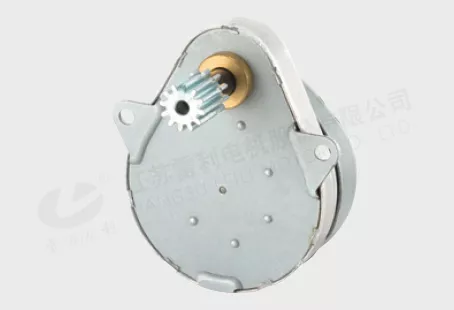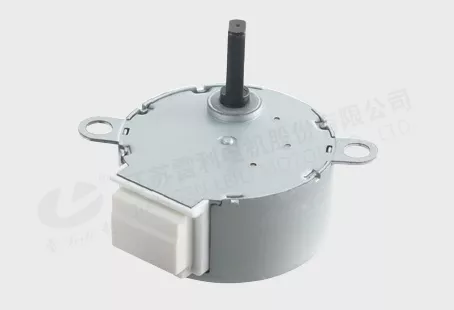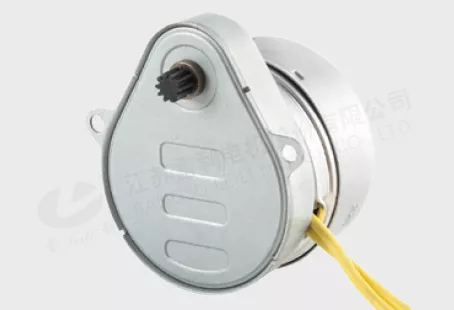Both permanent magnet synchronous motor and hysteresis synchronous motor belong to a kind of synchronous motor, but they have some differences in the way of magnetic field generation and regulation, characteristics, and application fields.
Permanent Magnet Synchronous Motor
A permanent magnet synchronous motor is a type of motor whose magnetic field is generated by a permanent magnet inside. These permanent magnets are usually embedded in the rotor of the motor and produce a constant magnetic field without the need for external current excitation. Permanent magnet synchronous motors usually have high efficiency, high power factor and high control accuracy, and are suitable for applications requiring efficient energy conversion and precise control, such as electric vehicles, industrial drives and wind power generation.
 |
 |
Hysteresis Synchronous Motor
A hysteresis synchronous motor is also a synchronous motor whose magnetic field is generated through an energized coil. When powered on, a magnetic field will be formed around the coil, and after power failure, the magnetic field will gradually weaken, which may be accompanied by hysteresis. The characteristics of hysteresis synchronous motors may perform well in some specific load ranges, but may be unstable under high load conditions. The applications of hysteresis synchronous motors are relatively few and usually limited to some special areas, such as laboratory research or specific engineering needs.
 |
 |
Permanent Magnet Synchronous Motor
- Source of magnetic field: The magnetic field of a permanent magnet synchronous motor is provided by permanent magnets, which are usually embedded in the motor structure to produce a constant magnetic field.
- Adjustment mode: Due to the constant magnetic field, permanent magnet synchronous motors usually require external electronic control to adjust their operation. This control usually involves the adjustment of parameters such as current and voltage to maintain constant synchronization.
- Characteristics: Permanent magnet synchronous motor has the characteristics of high efficiency, high power factor and high control accuracy. Due to the constant magnetic field, they are usually able to provide stable performance over a wide range of loads.
- Applications: Permanent magnet synchronous motors are widely used in fields requiring high-efficiency energy conversion, such as electric vehicles, industrial drives, wind power generation, etc.
Hysteresis Synchronous Motor
- Magnetic field source: The magnetic field of the hysteresis synchronous motor is generated by the energized coil, and the magnetic field will be generated near the coil when energized, and the magnetic field will be weakened after the power failure, and hysteresis may occur.
- Adjustment mode: The magnetic field of the hysteresis synchronous motor can be achieved by adjusting the current of the energized coil, which is relatively direct.
- Characteristics: Hysteresis synchronous motors may have good performance in some specific load ranges, but there may be some instability under high load conditions.
- Applications: Hysteresis synchronous motors have relatively few applications, and are usually used in some specific laboratories, research fields or applications with special needs.
Comparative Advantages:
- Permanent magnet synchronous motor: has the characteristics of high efficiency, high power factor, high control accuracy, etc., suitable for the application field requiring high efficiency conversion and precise control.
- Hysteresis synchronous motor: may show good performance in some specific load ranges, but the application range is relatively narrow, not as wide as the applicability of permanent magnet synchronous motor in a wide range of fields.
The choice of which type of synchronous motor to use should be determined according to the specific application requirements and performance requirements to ensure the best working effect.
As two main types of synchronous motors, permanent magnet synchronous motor and hysteresis synchronous motor have significant differences in magnetic field generation, characteristics and applications, and have their own unique uses and advantages. The following is a more detailed comparison and analysis of the two motors.
Magnetic Field Generation:
Permanent magnet synchronous motors use permanent magnets as magnetic field sources, and these permanent magnets are usually embedded in the rotor of the motor to produce a stable magnetic field. In contrast, hysteresis synchronous motors generate a magnetic field through an energized coil, which forms a magnetic field when energized and gradually weakens after power failure. This difference determines how they work and their performance characteristics.
Features:
Permanent magnet synchronous motor has the characteristics of high efficiency, high power factor and high control precision. Its constant magnetic field allows it to provide stable performance over a wide range of loads and is suitable for applications requiring efficient energy conversion and precise control. These characteristics make permanent magnet synchronous motors ideal for electric vehicles, industrial drives and wind power.
In contrast, the performance of hysteresis synchronous motors may be excellent in some specific load ranges, but may be unstable at high loads. Hysteresis phenomenon may lead to performance variation, which requires targeted control strategies to deal with.
Applications:
Permanent magnet synchronous motor is widely used in different fields. In electric vehicles, permanent magnet synchronous motors provide powerful power and long driving range for vehicles with their high efficiency and high power factor. In industrial drives, they are able to efficiently convert electrical energy into mechanical energy for various mechanical operations. In addition, permanent magnet synchronous motors are also used in wind power systems to promote the use of renewable energy by efficiently converting wind energy into electricity.
The application of hysteresis synchronous motors is relatively few, usually limited to some special requirements of the scene. For example, in some laboratory studies, it may be necessary to adjust the strength of the magnetic field or explore the properties of the hysteresis phenomenon.
Advantages:
The advantages of permanent magnet synchronous motor are its high efficiency, high power factor and high control accuracy. Thanks to the constant magnetic field, they provide stable performance under various load conditions, helping to reduce energy consumption and improve work efficiency. In addition, they are suitable for a wide range of applications, which have a positive impact on the development of modern industry and transportation.
Although hysteresis synchronous motors may exhibit good performance within a specific load range, their application is limited due to their instability. Therefore, compared with permanent magnet synchronous motor, hysteresis synchronous motor has relatively few advantages.
In summary, permanent magnet synchronous motor and hysteresis synchronous motor have obvious differences in magnetic field generation, characteristics, applications and advantages. When selecting the type of motor, it is necessary to fully consider the specific application requirements, performance requirements, and economic factors to ensure the best working effect. Whether to improve energy efficiency or to meet specific needs, these two types of motors play an important role in different fields.

